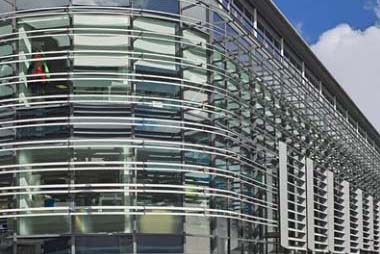
With their front row seats, property experts Emily Wood and Ben Price reflect on how the pandemic is changing the future of the commercial property market.
The majority of office occupiers accept that a return to the densely-occupied office of the recent past is unlikely, and most commercial tenants are stepping back to evaluate the need for their larger space, or space providing less amenity. The common agenda of clients is to reduce or reconfigure portfolios or footprint: they are looking to relocate, co-locate, or re-organise to better suit their “new” needs.
The pandemic itself however does not provide an automatic means of escape from most current lease obligations (see below). Understandably, landlords are reluctant to simply agree that their tenants can walk away from such obligations; as well as the immediate impact on their own income and the value of their investment, the potential for following voids makes it a very unattractive option.
A glimmer of hope for an occupier looking to end a lease may be a break option, and we have certainly seen plenty being exercised. But the timing and conditions to a break are vital for success, and taking professional advice is essential. There is also the possibility of finding an assignee or subtenant to take on surplus space. Any occupier considering their requirements should start with reviewing the options within their current leases.
In terms of outgoings under leases, whilst the business rate holidays have been welcome, the opportunities for occupiers to reduce or suspend their rents during this time are slim. Turnover rents could be the only saving grace for some if trade has been impacted during the pandemic. Of course a landlord may agree to defer, reduce or even suspend rent for a period to avoid its tenant’s insolvency, or if offered a longer term or other incentive, and that is a conversation worth having; it is critical that any agreements reached are carefully documented.
Clause for celebration?
Let’s look at some of the common clauses/concepts that tenants might look to for relief:
“Frustration”
The detail
A legal concept which applies when a supervening event not provided for in a lease significantly alters the respective positions of the parties, and can be used to bring a lease to an end.
The chances
The bar is very high. Even when restrictions placed on premises because of the pandemic might so easily be considered a serious event, this legal concept is still
unlikely to succeed.
“Force Majeure”
The detail
A clause that can allow either party to suspend performance of their obligations or even terminate a lease in certain circumstances. Rare in modern leases.
The chances
Does the wording include the pandemic? Normally designed to cover exceptional events which permanently hinder performance, and whilst the pandemic and closures were unexpected, the disruption is hopefully temporary.
Reduction or suspension of rent
The detail
Usually provides for the automatic suspension or reduction of rent where there has been damage to, or a destruction of, the premises by an insured risk.
The chances
Covid-19 does not cause physical damage or destruction, so these provisions are unlikely to be engaged.
“Quiet enjoyment” or “Derogation from grant”
The detail
If a landlord closes a building, tenants may have a claim for breach of these clauses.
The chances
If the closure is required by law or in accordance with Government regulations, the landlord may have its defence to any claim.
Looking forward to a flexible future
Most of our clients recognise that a physical property presence will remain important for the future, offering a competitive advantage or to facilitate staff collaboration and learning. Most are retaining or renewing at least some space. But where there is the opportunity, they are looking for more flexibility - through break options (as well as Covid clauses), and shorter terms, often coupled with contractual rights to renew. And geographical considerations are no longer focused on town or city centres: working from home has demonstrated that out-of-town ‘hubs’ can work.
When it comes to what landlord services they want most going forward, the focus is on health, wellbeing, and amenity: does the air-con circulate fresh air, do windows open, is there some outside space?
The property market is not built for speed, and it will take time to move to more flexible and refocused lease terms, but the occupiers’ market is by no means all doom and gloom; our clients are showing resilience and determination to find a way through the difficult circumstances we find ourselves in. The shock of lockdown 1.0 has been replaced with an element of optimism, a belief that things cannot be as bad again.
The future of commercial real estate will most certainly be very different, but bricks and mortar are definitely not a thing of the past.
Emily Wood leads the Real Estate Dispute Resolution team, and Ben Price is a Commercial Property Partner at DMH Stallard.
Contact Emily at emily.wood@dmhstallard.com or by calling 01293 605578;
contact Ben at ben.price@dmhstallard.com or by calling 01293 605085.





